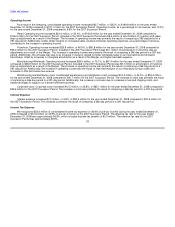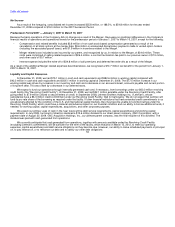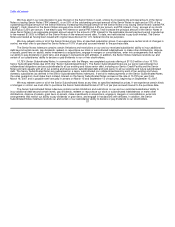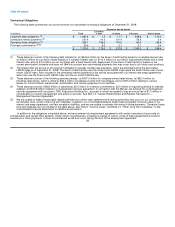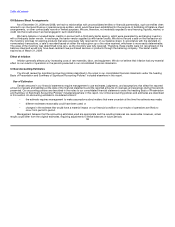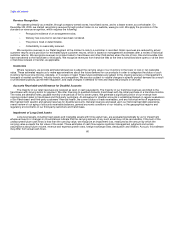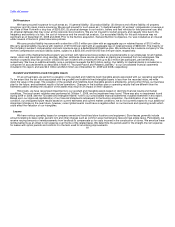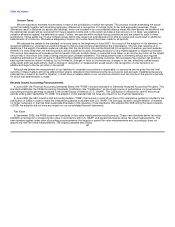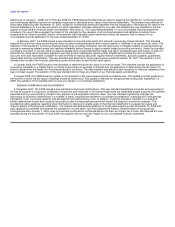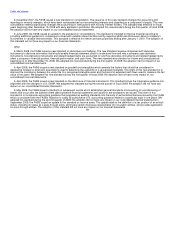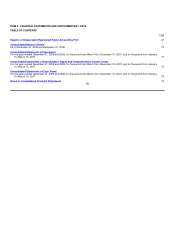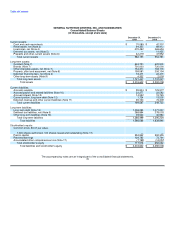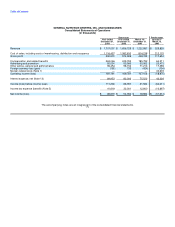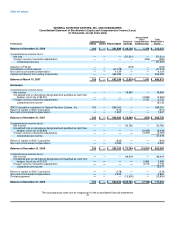GNC 2010 Annual Report Download - page 69
Download and view the complete annual report
Please find page 69 of the 2010 GNC annual report below. You can navigate through the pages in the report by either clicking on the pages listed below, or by using the keyword search tool below to find specific information within the annual report.
Table of Contents
effective as of January 1, 2008, but in February 2008 the FASB delayed the effectiveness date for applying this standard to nonfinancial assets
and nonfinancial liabilities that are not currently recognized or disclosed at fair value in the financial statements. The standard was effective for
fiscal years beginning after November 15, 2007, except for nonfinancial assets and liabilities that are recognized or disclosed at fair value in the
financial statements on a nonrecurring basis, for which application has been deferred for one year. We adopted this new standard in the first
quarter of fiscal 2008 for financial assets and liabilities. See Note 23, "Fair Value Measurements," to our consolidated financial statements
included in this report. We evaluated the impact of the standard on the valuation of all nonfinancial assets and liabilities, including those
measured at fair value in goodwill, brands, and indefinite lived intangible asset impairment testing; the adoption had no impact on our
consolidated financial statements for the year ended December 31, 2009.
In February 2007, the FASB issued a new standard on financial instruments that amends a previously issued standard. This standard
expands the use of fair value accounting but does not affect existing standards which require assets or liabilities to be carried at fair value. The
objective of the standard is to improve financial reporting by providing companies with the opportunity to mitigate volatility in reported earnings
caused by measuring related assets and liabilities differently without having to apply complex hedge accounting provisions. Under the standard,
a company may elect to use fair value to measure eligible items at specified election dates and report unrealized gains and losses on items for
which the fair value option has been elected in earnings at each subsequent reporting date. Eligible items include, but are not limited to,
accounts and loans receivable, available-for-sale and held-to-maturity securities, equity method investments, accounts payable, guarantees,
issued debt and firm commitments. The new standard was effective for fiscal years beginning after November 15, 2007. The adoption of this
standard did not affect the financial statements as we did not elect to use the fair value option.
In October 2008, the FASB issued a new standard on determining the fair value of a financial asset. This standard clarifies the application of
accounting standards in a market that is not active and provides an example to illustrate key considerations in determining the fair value of a
financial asset when the market for that financial asset is not active. The new standard was effective upon issuance for financial statements that
have not been issued. The adoption of this new standard did not have any impact on our financial assets and liabilities.
In August 2009, the FASB issued an update to the standard on fair value measurements and disclosures. This update provides guidance on
the manner in which the fair value of liabilities should be determined. This update is effective for annual periods ending after September 15,
2009. The adoption of this standard did not have any impact on our financial statements.
Business Combinations and Consolidations
In December 2007, the FASB issued a new standard on business combinations. This new standard establishes principles and requirements
for how an acquirer in a business combination recognizes and measures in its financial statements the identifiable assets acquired, the liabilities
assumed and any noncontrolling interest in the acquiree at the acquisition date fair value. The new standard significantly changes the
accounting for business combinations in a number of areas, including the treatment of contingent consideration, preacquisition contingencies,
transaction costs, in-process research and development and restructuring costs. In addition, under this standard, changes in an acquired
entity's deferred tax assets and uncertain tax positions after the measurement period will impact the acquirer's income tax expense. The
standard provides guidance regarding what information to disclose to enable users of the financial statements to evaluate the nature and
financial effects of the business combination. The original standard became effective for fiscal years beginning after December 15, 2008 with
early application prohibited and amends the standard on income taxes such that adjustments made to deferred taxes and acquired tax
contingencies after January 1, 2009, even for business combinations completed before this date, will impact net income. We adopted this new
standard during the first quarter of fiscal 2009; the adoption did not have any impact on our consolidated financial statements.
63


